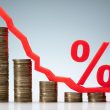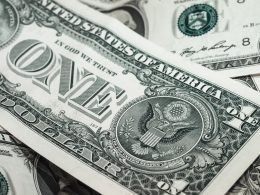As the US economy faces the repercussions of fluctuating economic indicators, the Federal Reserve is once again at the center of financial market speculation. A key official recently stated that the deceleration in US retail sales could potentially pave the way for a much-anticipated rate cut. This commentary has sparked a discussion about the broader implications for the economy and the Federal Reserve’s approach to monetary policy. This article will delve into the nuances of this statement, the current economic landscape, and the potential outcomes of a rate cut.
The Current State of US Retail Sales

Retail sales are a critical component of the US economy, accounting for a significant portion of consumer spending, which itself constitutes approximately 70% of the gross domestic product (GDP). Over recent months, there has been a noticeable slowdown in retail sales, reflecting a shift in consumer behavior and broader economic challenges.
Several factors contribute to this slowdown:
1. **Consumer Confidence:** Consumer sentiment has been wavering due to uncertainties around inflation, employment, and future economic conditions. When consumers are uncertain about their financial future, they tend to reduce spending, especially on non-essential items.
2. **Inflation:** Persistent inflation has eroded purchasing power, making goods and services more expensive. This has forced consumers to prioritize their spending, often cutting back on discretionary purchases.
3. **Rising Interest Rates:** The Federal Reserve’s previous rate hikes aimed at combating inflation have increased borrowing costs. Higher interest rates on mortgages, car loans, and credit cards have further squeezed household budgets, leading to reduced spending.
4. **Global Economic Conditions:** Global supply chain disruptions and geopolitical tensions have also played a role in dampening retail sales. The uncertainty in global markets can lead to cautious consumer spending domestically.
Federal Reserve’s Monetary Policy
The Federal Reserve’s primary tool for managing the economy is its control over interest rates. By adjusting the federal funds rate, the Fed can influence economic activity. Lowering interest rates generally aims to stimulate the economy by making borrowing cheaper, encouraging spending and investment. Conversely, raising rates typically aims to curb inflation by slowing down economic activity.
Over the past year, the Fed has implemented a series of rate hikes in response to rising inflation, which reached levels not seen in decades. These measures have been somewhat effective in tempering inflation, but they have also had the side effect of slowing economic growth, including retail sales.
The Case for a Rate Cut
The statement by a top Federal Reserve official suggesting that slowing retail sales bolster the case for a rate cut is significant. It indicates that the Fed is closely monitoring retail sales as a key economic indicator and is prepared to adjust its policy accordingly.
1. **Balancing Act: Inflation vs. Economic Growth
The Federal Reserve faces a delicate balancing act between controlling inflation and supporting economic growth. While high inflation necessitates rate hikes, a sharp decline in economic activity, including retail sales, might require a more accommodative stance. If retail sales continue to decline, it could signal a broader economic slowdown that necessitates a rate cut to stimulate spending and investment.
2. **Preventing a Recession**
A significant slowdown in retail sales could be a precursor to a recession. By cutting rates, the Fed can lower borrowing costs, encouraging consumers to spend and businesses to invest, which can help avert a deeper economic downturn. This preemptive move could stabilize the economy and maintain employment levels.
3. **Market Expectations and Stability**
Financial markets closely watch Federal Reserve policy statements and decisions. By signaling a potential rate cut, the Fed can manage market expectations and provide a sense of stability. This can help avoid market volatility, which itself can negatively impact economic growth.
Potential Outcomes and Implications of a Rate Cut
Should the Federal Reserve decide to cut rates in response to slowing retail sales, several outcomes and implications could emerge:
1. **Stimulated Consumer Spending**
Lower interest rates can reduce the cost of borrowing, making it more attractive for consumers to take out loans for big-ticket items like homes and cars. This can lead to an increase in retail sales, providing a boost to the economy.
2. **Business Investment**
Businesses might also benefit from lower borrowing costs, leading to increased investment in expansion, technology, and hiring. This can contribute to economic growth and potentially mitigate the effects of a slowdown in consumer spending.
3. **Inflation Concerns**
While a rate cut can stimulate economic activity, it also carries the risk of reigniting inflation. If consumer and business spending increase too rapidly, it could lead to higher demand for goods and services, pushing prices up. The Fed would need to carefully monitor inflation and be prepared to adjust its policy if necessary.
4. **Impact on Savings and Fixed-Income Investments**
Lower interest rates can adversely affect savers and those relying on fixed-income investments. With reduced returns on savings accounts and bonds, these individuals may find it harder to achieve their financial goals. This can affect overall consumer confidence and spending patterns.
Historical Context and Lessons
Historically, the Federal Reserve has navigated similar scenarios where it had to balance the need for economic stimulation with the risk of inflation. For instance, during the 2008 financial crisis, the Fed aggressively cut rates to near zero to combat the severe economic downturn. This move, along with other monetary and fiscal policies, helped stabilize the economy but also led to debates about the long-term effects on inflation and market stability.
The current situation, while not as dire as the 2008 crisis, still presents a complex challenge for the Fed. Learning from past experiences, the Fed must weigh the immediate benefits of a rate cut against the potential long-term consequences.
Broader Economic Indicators
While retail sales are a crucial indicator, the Federal Reserve considers a range of economic data when making policy decisions. Employment rates, manufacturing output, housing market trends, and global economic conditions all play a role in shaping the Fed’s strategy.
Currently, the US labor market remains relatively robust, though there are signs of cooling. Unemployment rates are low, but job growth has slowed compared to previous years. Manufacturing output has been mixed, with some sectors experiencing growth while others face challenges due to supply chain disruptions and global competition.
The housing market, significantly impacted by interest rate changes, has shown signs of slowing down. Higher mortgage rates have led to reduced affordability, dampening home sales and new construction.
The Global Context
The US economy does not operate in isolation. Global economic conditions, including trade policies, geopolitical tensions, and economic performance in major markets like Europe and China, influence domestic economic activity. The Federal Reserve must consider these global factors when deciding on monetary policy.
For instance, ongoing trade tensions and tariffs can affect export and import dynamics, impacting businesses and consumers. Geopolitical events, such as conflicts or political instability, can lead to fluctuations in global markets, affecting US economic performance.
Conclusion: A Delicate Decision
The statement from the top Federal Reserve official about the potential for a rate cut in response to slowing retail sales highlights the complexity of the current economic landscape. The Fed’s decision-making process involves balancing the need to support economic growth with the imperative to control inflation.
A rate cut could provide a much-needed boost to consumer spending and business investment, helping to stabilize the economy in the face of slowing retail sales. However, it also carries risks, including the potential for reigniting inflation and impacting savers and fixed-income investors.
As the Federal Reserve navigates these challenges, it must remain vigilant, flexible, and responsive to a wide array of economic indicators. The coming months will be critical in determining the trajectory of US monetary policy and its impact on the broader economy. Ultimately, the Fed’s actions will play a crucial role in shaping the economic outlook, influencing everything from retail sales to global market stability.











